IT WAS RAINING MONDAY WHEN WE LEFT DAEGU. Through the rain-streaked windows of our “bullet” train forested hillsides alternated with towering apartment blocks as we chugged through unknown cities on our way to Seoul. It was still raining when we walked out of Seoul Station looking for a cab driver who understood English.
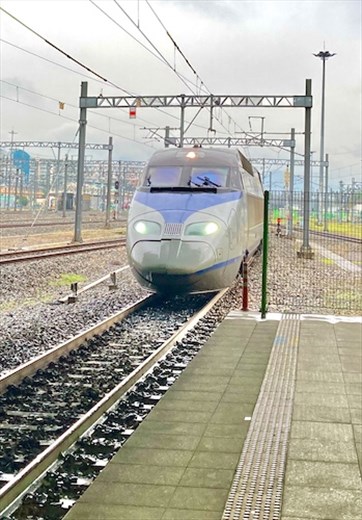
Barely a Bullet—Daegu to Seoul
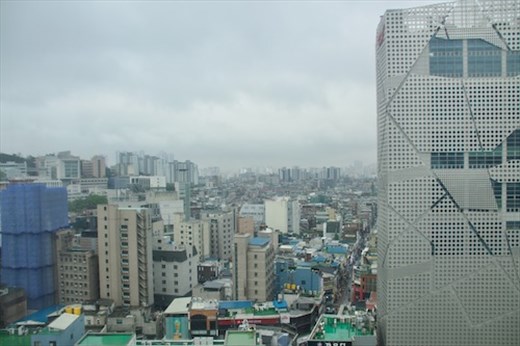
Seoul from from our window
Our 15th floor room at Arirang Hills Hotel comes with a kitchenette and views of Seoul’s skyline through the smutch—even on sunny days the weather forecast cautions “areas of yellow dust and haze are possible.” Koreans blame the poor air quality on foul winds from China but a recent article in Scientific American cited home-grown industries like Samsung, Hyundai and LG as the culprits.
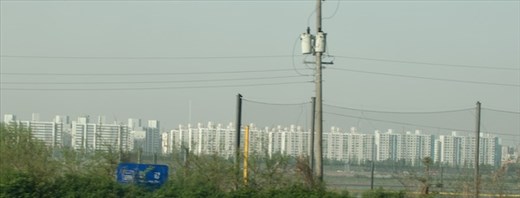
Koreans dream of a high-rise "apartu-danji"
One of the first things Americans notice in Seoul is the giant, identical-looking apartment complexes. With Korea’s rapid growth it is more convenient and economical to build up so high-rise apartments, not single-family homes, are the Korean dream. They are comfortable, convenient and easier to afford for ordinary people. Nearly two-thirds of Koreans—even more “Seoulites”—live in “apartu-danji,” many built and marketed by the same corporations responsible for the pollution.

Gyeongbobgung Palace in the middle of Seoul

Gyeongbobgung Palace from outside the wall
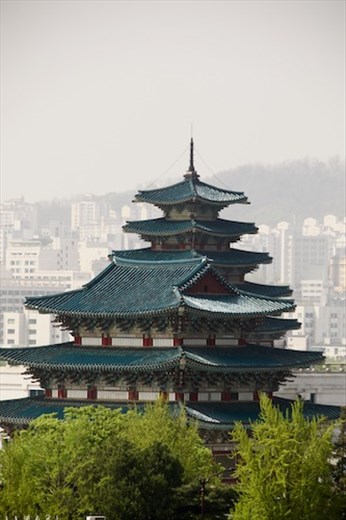
Great Pagoda of Gyeongbobgung Palace
Seoul isn’t all snarled traffic and concrete towers. There are more than fifty Buddhist temples scattered around the city, countless parks and five Royal Palaces. We had visited Changdeokgung Palace and the nearby Jongmyo Shrine—two “must-see”—in 2014 and we may stop in again. But today it was time for Gyeongbobgung Palace. Gyeongbobgung is the largest palace in Seoul, some say it is the most beautiful. Originally built in 1394, it was burned to the ground during the Japanese invasion in the late 16th Century. Gyeongbobgung was again damaged during the long Japanese occupation and during the Korean War so much of what stands today in new construction.
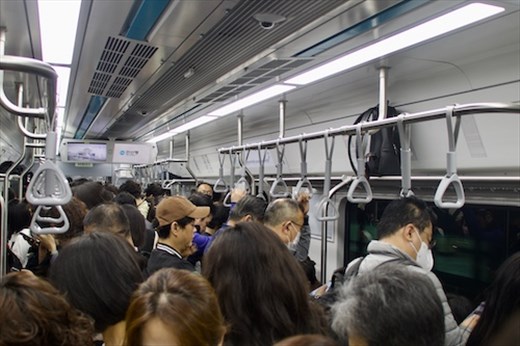
Like sardines but headed in the right direction
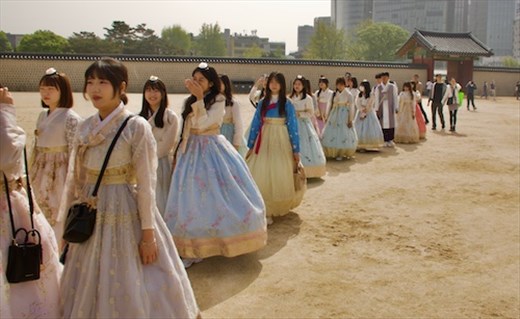
When in doubt, follow the crowd
Seoul’s Metro is wonderful. There is a station right outside our hotel,fares are low, trains are clean and frequent, which may be why it’s so popular. And crowded We were squeezed like sardines and we emerged from below blinking in the sunlight, not quite knowing where we were or in what direction to go. We saw a line of people dressed in formal Hanbok costumes and followed along, figuring he Palace would make an ideal setting for wedding photos.

Group photo (notice the shoes!)
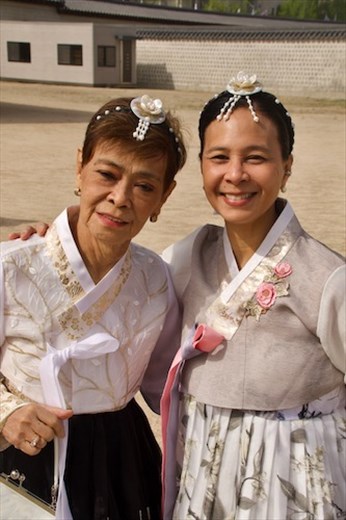
Women of a Certain Age dressed in Hanbok
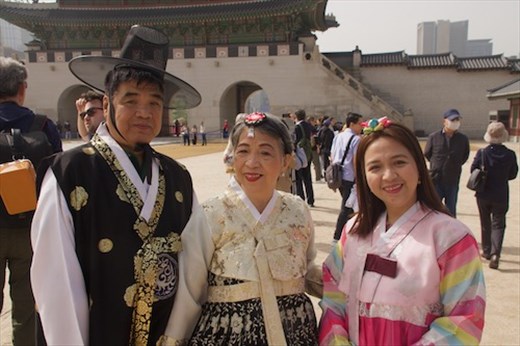
Even guys get into the act
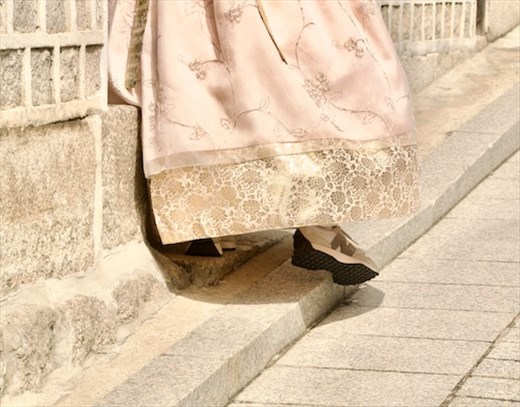
At least they're comfortable
No wedding . . . but they were heading towards Gyeongbobgung Palace. Koreans, we learned, like to dress-up in traditional Hanbok costumes just for the hell of it. Young girls, of course and women of-a-certain-age. Somehow they convince their menfolk to don rental glad rags. There are hanbok rental shops on every corner near the Palace, about $15 for half-day rental. The thing I found amusing is that nearly everyone wears sneakers with their hanbok!
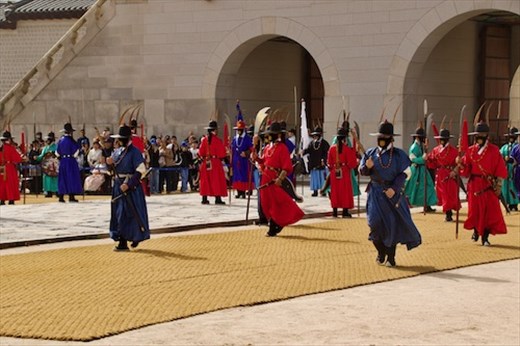
Just in time for Changing of the Palace Guard, Gyeongbobgung Palace
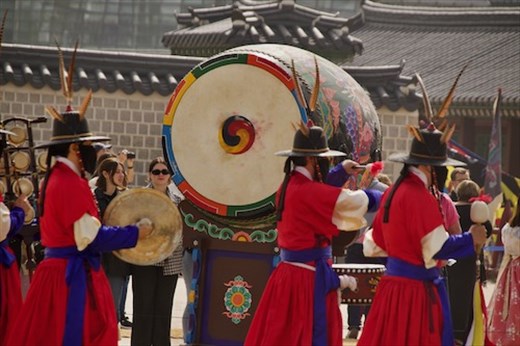
The drums go bang and the cymbals clang . . .
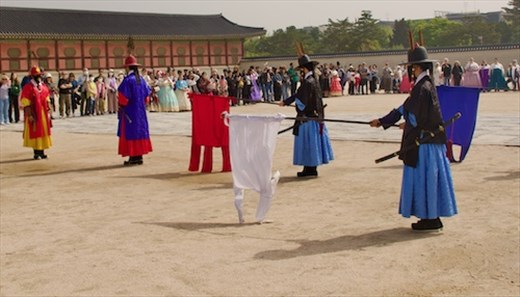
Changing of the Palace Guard, Gyeongbobgung Palace
We couldn’t have timed it better, just in time for the ten o’clock changing of the guards—pounding drums, blaring trumpets, clashing cymbals, colorful uniforms and flags! By the time the guards had left there was a long line to enter the temple, the one to buy tickets was even longer, school groups were arriving and tour buses were dropping off more people. Time to scoot.
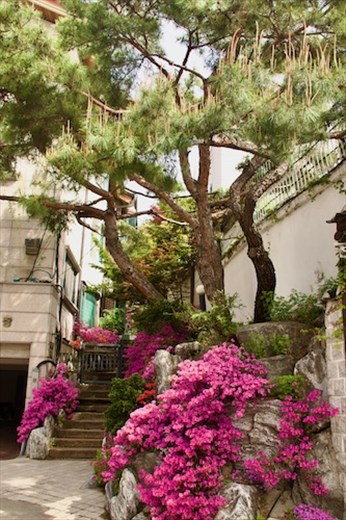
Prime Real Estate, Bukchon Hanok Village

Location, location, location—Bukchon Hanok Village
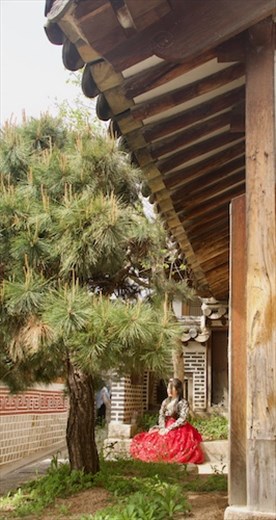
An Instagram moment, Bukchon Hanok Village
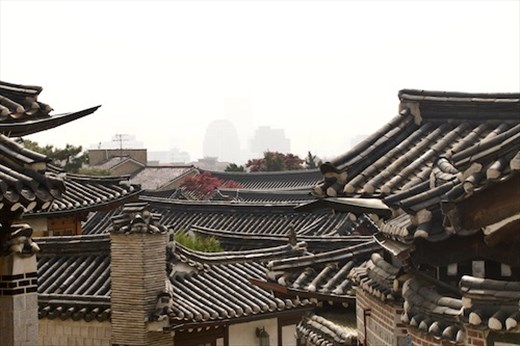
Snarly roof lines, Bukchon Hanok Village
So we headed uptown—uphill, anyway—to Bukchon Hanok Village, “hanok” referring to traditional Korean architecture. Some of the hanok are cultural buildings and shops but Bukchon is mostly a real neighborhood, not a tourist village. We have read that many of the residents aren’t happy with the attention from tourists. The streets today were crowded with costumed gawkers, a bit like early Trick-or-Treaters, and it wasn’t easy getting a photo without people. Most everyone was quiet and respectful but even so, having so many eyes staring at you could become annoying. Maybe living in a high-rise apartment has its charm, too.